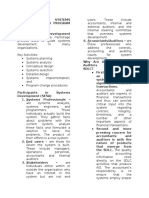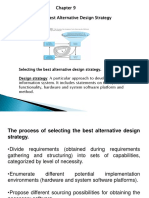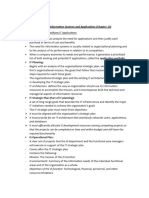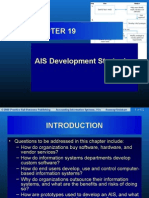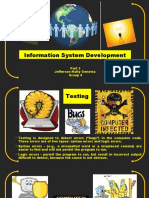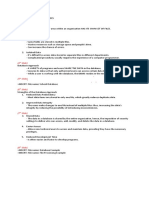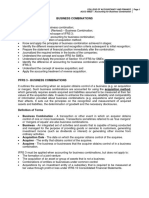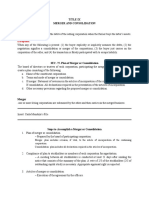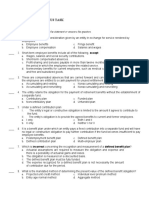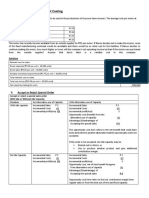0% found this document useful (0 votes)
142 views3 pagesSystems Development and Program Change Activities
Systems development involves key activities to obtain IT-based information systems. There are three groups that participate in systems development: 1) Systems professionals who build the system, 2) End users for whom the system is built, and 3) Stakeholders with interest in the system. Organizations can acquire information systems through two ways - developing customized systems in-house or purchasing commercial systems from vendors. Commercial systems offer benefits like lower costs and reliability but also disadvantages like lack of independence and inability to customize.
Uploaded by
rachel banana hammockCopyright
© © All Rights Reserved
We take content rights seriously. If you suspect this is your content, claim it here.
Available Formats
Download as DOCX, PDF, TXT or read online on Scribd
0% found this document useful (0 votes)
142 views3 pagesSystems Development and Program Change Activities
Systems development involves key activities to obtain IT-based information systems. There are three groups that participate in systems development: 1) Systems professionals who build the system, 2) End users for whom the system is built, and 3) Stakeholders with interest in the system. Organizations can acquire information systems through two ways - developing customized systems in-house or purchasing commercial systems from vendors. Commercial systems offer benefits like lower costs and reliability but also disadvantages like lack of independence and inability to customize.
Uploaded by
rachel banana hammockCopyright
© © All Rights Reserved
We take content rights seriously. If you suspect this is your content, claim it here.
Available Formats
Download as DOCX, PDF, TXT or read online on Scribd
/ 3

















